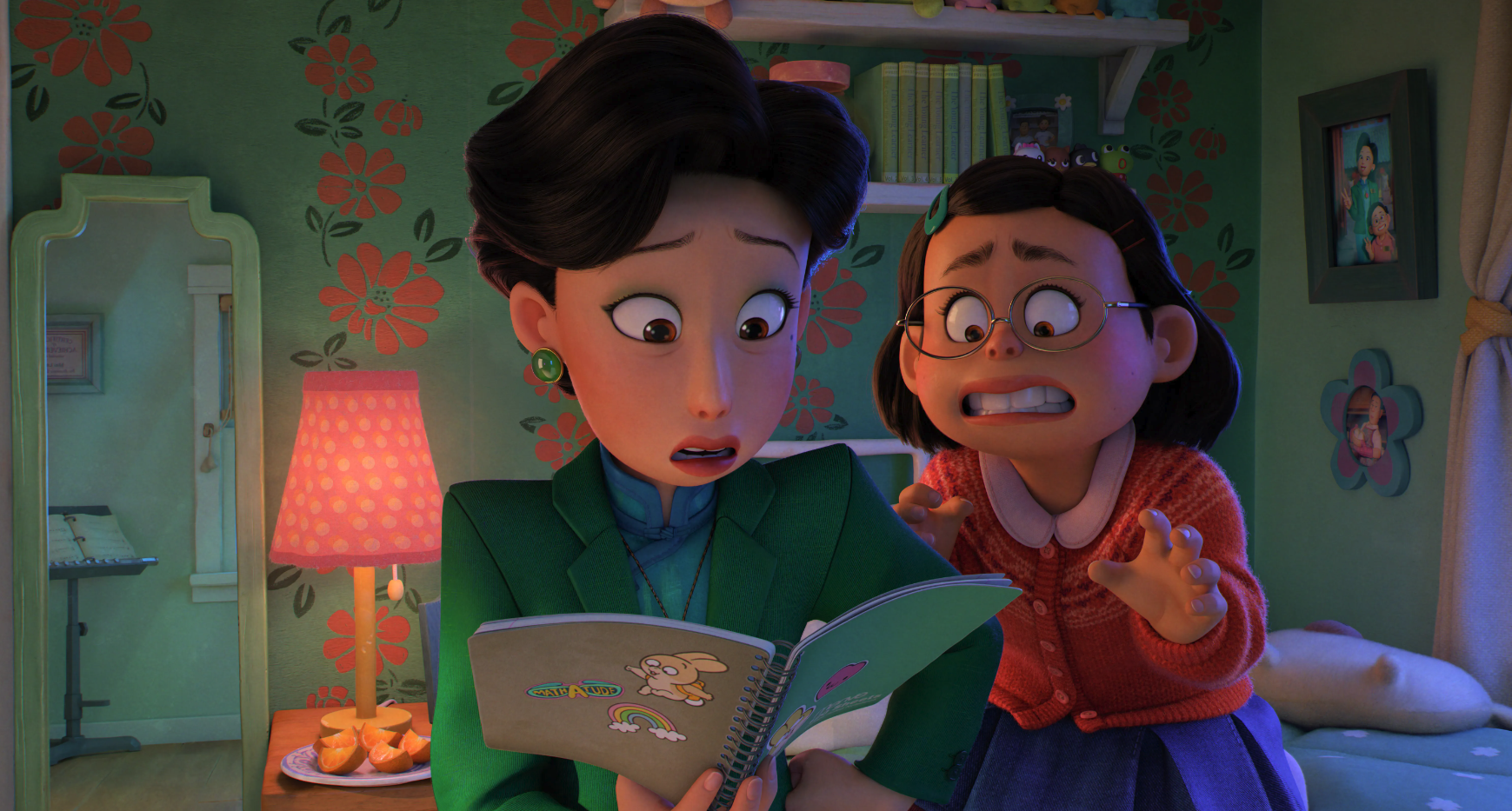Turning Red: Exploring Asian Diaspora Narratives in Therapy
As a therapist, have you ever considered using media to help your clients explore their emotions and experiences? Movies, TV shows, and other forms of media can provide a safe and engaging way for clients to reflect on their stories and identities. One recent film that may be particularly useful in therapy is Turning Red, a Pixar movie that explores themes of cultural identity, intergenerational trauma, and post-traumatic growth.
In their presentation titled “Turning Red: Seeing and Being Seen,” presenters Dr. Elizabeth Smith PsyD and Ariel Landrum LMFT at the virtual Therapeutic Applied Geek and Gaming Summit (TAGGS), we discussed how therapists could use the critically acclaimed film in therapy. The presentation, on Saturday, April 22, from 4 pm - 5:30 pm PST, covered several theoretical frameworks, interventions, and specific themes within the film that help highlight unique struggles for Asian American/Native Hawaiian/Pacific Islander (AANHPI) diaspora clients.
Cultural Concepts In The Film
Common Themes
We explored themes within the film that represent growing up, parenting, or beliefs within the AANHPI community. These themes can be incorporated into therapeutic interventions, which aid in addressing clinical topics of anxiety, coping strategies, sensory needs, identity development, and more.
Intergenerational Trauma
One important concept we discussed is intergenerational trauma, which refers to transmitting trauma, including emotional and psychological pain and suffering, from one generation to the next. The film introduces the earliest ancestor, Sun Lee, who prayed during the war and transformed into a panda. Her trauma included food insecurities, concerns for her children, grief, and loss. Trauma can be defined in various terms, and by addressing the Central Nervous System (CNS), CNS can be an accessible way to discuss intergenerational trauma. CNS is a complex network of nerves and cells that carry messages to and from the brain and spinal cord to various body parts. It plays a crucial role in regulating and coordinating bodily functions and processes, such as movement, sensation, perception, and cognition. Clients can benefit from understanding that traumatic symptoms introduced by their ancestors, experienced in the CNS, must be discharged from the body in therapy.
Attachment Wounds
The film's main character, Mei Mei Lee, struggles with attachment wounds that can be explored in therapy. Mei Mei's attachment to her mother is strained, as she feels pressure to live up to her mother's expectations of perfection and achievement. Mei Mei is also reluctant to express her emotions, a common characteristic of individuals with attachment wounds. Instead of facing her feelings, Mei Mei suppresses and dismisses them, leading to unresolved emotional issues and out-of-control behavior.
In therapy, the attachment wounds in Turning Red can be explored through several interventions. Clinicians can use attachment-focused techniques such as emotion coaching, which involves helping clients identify and express their emotions healthily. Clinicians can also explore attachment styles with clients, identifying any negative patterns affecting their relationships with others. Attachment-focused interventions can help clients develop healthier relationships with themselves and others.
Other cultural conceptions common to the AANHPI experience found in the film included:
Pyramid of Violence, which describes how oppressive structures and behaviors can lead to violence and trauma
Family and cultural strengths can help individuals build resilience and connection in adversity.
Post-traumatic growth recognizes that individuals can experience growth and positive change after experiencing trauma.
Narrative Therapy
One detailed therapeutic framework discussed in the presentation was Narrative Therapy, which helps individuals separate themselves from their problems and become experts in their solutions. This approach emphasizes the stories we carry with us through our lives and how these stories shape our understanding of ourselves and the world around us. Regarding using Turning Red in therapy, the film explores several cultural themes that may be particularly relevant to clients. Cultural themes in the film include the Model Minority Myth, perfectionism, Filial piety, and cultural stressors such as achievement and success-driven guilt.
To help clients explore these themes, therapists can use a range of Narrative Therapy interventions. For example, they can help clients objectify (externalize) their problems, framing them within a larger sociocultural context. They can also teach clients how to make room for other stories, recognizing that there is no single objective reality or absolute truth.
Develop the Narrative
Developing the narrative involves helping individuals identify the stories they tell themselves about their experiences and how these stories shape their understanding of themselves and the world around them.
Ask the client to pick a character in the movie that resonates with them and discuss why.
Ask the client to choose a character they are repulsed by and explore why.
Create a timeline with the client representing character growth and change, highlighting pivotal moments that caused those changes.
Externalization
Externalization is a technique that helps individuals separate themselves from their problems by viewing them as external entities rather than a part of themselves. It involves personifying the problem, giving it a name, and describing its characteristics so the client can better understand and address it.
Use the Red Panda as a template to externalize problems.
Ask the client what the Red Panda in their life is.
Ask the client what they would have used to lock the panda if they had chosen to do so.
Discuss with the client the importance of making room for "messy" emotions and thoughts.
Have the client choose an animal, a color, and a name for their problem.
Discuss with the client what could have happened if Mei Mei didn't keep her panda.
Unique Outcomes
Unique outcomes involve identifying and amplifying exceptions to the client's problem. The focus is not on the problem itself but on identifying moments when the problem was not present or was less severe. These unique outcomes can help clients create new narratives about their lives, emphasizing their strengths and resilience in adversity. With the film, the client can use the intervention of unique outcomes by having the client shift perspectives.
Have the client attempt to tell the story from another character's perspective, such as Mei Mei's friends, grandmother, or Aunties.
Inquire whose voice they feel needs to be amplified.
Explore the meaning of Ming Lee needing to "feed" her panda in the Tamagotchi.
Ask the client what parts of the story they would change, keep, or were surprised by.
Overall, using Turning Red in therapy can provide a unique and engaging way for clients to explore their stories and identities. By using interventions designed with the film in mind, clinicians can explore cultural conceptions in session safely and engagingly. If you’re a therapist who works with AANHPI clients and want to know more about using the film in session, we encourage you to purchase a media pass to see our presentation.





WEBSITE DISCLAIMER The information provided by Guidance Teletherapy Family Counseling Inc. (“we,” “us,” or" “our”) on https://www.guidancett.com/ (the “Site”) is for general information only. All information on the Site is provided in good faith. However, we make no representation or warranty of any kind, express or implied, regarding the accuracy, adequacy, validity, reliability, availability, or completeness of any information on the Site. Under no circumstance shall we have any liability to you for any loss or damage of any kind incurred as a result of the use of the Site or reliance on any information provided on the Site. Your use of the Site and reliance on any information o the Site is solely at your own risk.
EXTERNAL LINKS DISCLAIMER The Site may contain (or you may be sent through the Site) links to other websites or content belonging to or originating from third parties or links to websites and features in banners or other advertising. Such external links are not investigated, monitored, or checked for accuracy, adequacy, validity, reliability, availability, or completeness by us. We do not warrant, endorse, guarantee, or assume responsibility for the accuracy or reliability of any information offered by third-party websites linked through the Site or any website or feature linked in any banner or other advertising. We will not be a party to or in any way be responsible for monitoring any transaction between you and third-party providers of products or services.
PROFESSIONAL DISCLAIMER The Site cannot and does not contain medical/health/mental health advice. The medical/health/mental health information is provided for general information and educational purposes only. It is not intended as a substitute for professional advice. Accordingly, we encourage you to consult with the appropriate professionals before taking any actions based on such information. You should not use this information to diagnose or treat a mental or medication health condition. The use or reliance of any information contact on the Site is solely at your own risk.
AFFILIATES DISCLAIMER The Site may contain links to affiliate websites, and we receive an affiliate commission for any purchases you make on the affiliate website using such links. We are participants in the Amason Services LLC Associates Program, an affiliate advertising program designed to provide a means for us to earn advertising fees by linking Amazon.com and affiliated websites.